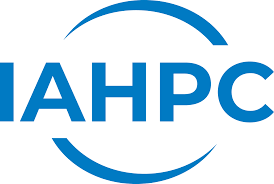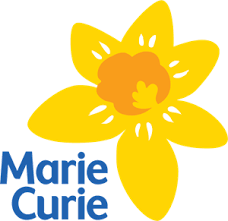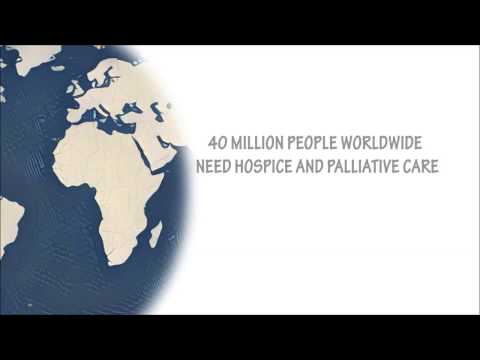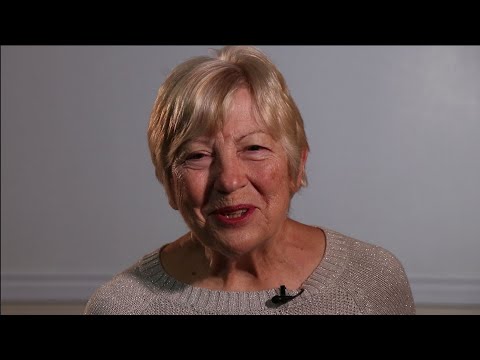9 Best Charities for Palliative Care (Complete 2024 List)
Impactful Ninja is reader-supported. When you buy through links on our site, we may earn an affiliate commission.
Learn more
Learn more
.
Hey fellow impactful ninja ? You may have noticed that Impactful Ninja is all about providing helpful information to make a positive impact on the world and society. And that we love to link back to where we found all the information for each of our posts. Most of these links are informational-based for you to check out their primary sources with one click. But some of these links are so-called "affiliate links" to products that we recommend. First and foremost, because we believe that they add value to you. For example, when we wrote a post about the environmental impact of long showers, we came across an EPA recommendation to use WaterSense showerheads. So we linked to where you can find them. Or, for many of our posts, we also link to our favorite books on that topic so that you can get a much more holistic overview than one single blog post could provide. And when there is an affiliate program for these products, we sign up for it. For example, as Amazon Associates, we earn from qualifying purchases. First, and most importantly, we still only recommend products that we believe add value for you. When you buy something through one of our affiliate links, we may earn a small commission - but at no additional costs to you. And when you buy something through a link that is not an affiliate link, we won’t receive any commission but we’ll still be happy to have helped you. When we find products that we believe add value to you and the seller has an affiliate program, we sign up for it. When you buy something through one of our affiliate links, we may earn a small commission (at no extra costs to you). And at this point in time, all money is reinvested in sharing the most helpful content with you. This includes all operating costs for running this site and the content creation itself. You may have noticed by the way Impactful Ninja is operated that money is not the driving factor behind it. It is a passion project of mine and I love to share helpful information with you to make a positive impact on the world and society. However, it's a project in that I invest a lot of time and also quite some money. Eventually, my dream is to one day turn this passion project into my full-time job and provide even more helpful information. But that's still a long time to go. Stay impactful,Affiliate Disclosure
Why do we add these product links?
What do these affiliate links mean for you?
What do these affiliate links mean for us?
What does this mean for me personally?
![]()
Each year, approximately 57 million patients and families need palliative care, and the demand for such services is expected to almost double by 2060. Yet, only 12% of the global palliative needs are currently being met because most countries have low or non-existent resources for palliative care or access to pain-relieving drugs. Fortunately, charities worldwide are fighting to provide critical help to patients with serious or life-threatening conditions. So we had to ask: What are the best charities for palliative care?
The best charities for palliative care are the Worldwide Hospice Palliative Care Alliance, Marie Curie, and Capital Caring Health. Other charities, like HopeHealth and the International Association for Hospice & Palliative Care support terminally-ill patients and their caregivers.
Whether you want to make sure that patients with advanced illnesses receive the palliative care they need, ensure that terminally-ill patients have access to hospice therapies, or support the emotional well-being of caregivers in times of loss and grief, there is a charity for you. Keep reading to learn more about what the best charities for palliative care are all about, how they work, and what would be your best way to make a contribution.
Here’s What All the Best Charities for Palliative Care Have in Common
The charities on this list were chosen based on their impact, mission, transparency ratings, and achievements.
They operate all over the world, from North America to Asia, providing medical and emotional aid to patients with life-limiting conditions.
Most of the charities below offer medical and emotional palliative care to improve the life quality of patients with serious illnesses. In addition, they serve terminally-ill people with hospice care to improve their well-being holistically in the final stages of life.
To make services more available and affordable, many charities also offer help in their clinics or hospices, patients’ homes, and other facilities.
Yet, through different means, all these charities share the same goal of meeting the medical, emotional, and spiritual needs of patients with advanced or terminal conditions while comforting their caregivers.
These Are the 9 Best Charities for Palliative Care in 2024
Below are our favorite charities for palliative care (you can click on their link to directly jump to their section in this article):
Best Charities For Palliative Care
(At the end of this article we’ll also share our six-step approach on how you can select the best charity to support.)
Worldwide Hospice Palliative Care Alliance: A Global Voice on Palliative Care

🔎
Their transparency & ratings:
The Worldwide Hospice Palliative Care Alliance holds the Bronze Seal of Transparency from GuideStar.
“Our vision is a world with universal access to hospice and palliative care. Our mission is to foster, promote and influence the delivery of affordable, quality palliative care.”
The Worldwide Hospice Palliative Care Alliance
⚒️
What they do:
The Worldwide Hospice Palliative Care Alliance works with local governments and hospice care providers to improve global access to palliative care in underserved regions. For this, they train palliative care providers and deliver critical pain-relieving drugs. They also advocate for national and international policies through awareness campaigns to ensure that hospice families and providers voice their needs and receive better support. For example, the charity runs programs in Africa and Bangladesh to strengthen palliative services for marginalized senior patients while creating supportive communities for lonely, terminally-ill people.
🚀
What they’ve achieved:
Today, the Worldwide Hospice Palliative Care Alliance unites 207 hospice and palliative care organizations from 77 countries. Across these regions, they have successfully integrated palliative care into international policies. Moreover, they have published the “Global Atlas of Palliative Care at the End of Life”, the first resource to measure the need for and availability of palliative care worldwide. Furthermore, their projects in Bangladesh have supported 1,000 caregivers and nearly 900 terminally-ill patients through 10,000 home visits. They have also reached almost 3,200 health professionals and community members with palliative care education and training.
✨
Ways to contribute:
You can donate to the Worldwide Hospice Palliative Care Alliance on their website. You can also subscribe to their newsletter or follow their Facebook and Twitter accounts. In addition, you can participate in their annual World Hospice and Palliative Care Day.
International Association for Hospice & Palliative Care: Advancing Hospice and Palliative Care Worldwide

🔎
Their transparency & ratings:
The International Association for Hospice & Palliative Care holds the Platinum Seal of Transparency from GuideStar.
“We serve as a global platform to inspire, inform and empower individuals, governments and organizations to increase access and optimize the practice of palliative care.”
The International Association for Hospice & Palliative Care
⚒️
What they do:
The International Association for Hospice & Palliative Care provides financial and technical support to institutions in developing countries to develop strategies that advance local palliative care. They also support local governments with educational congresses and trainings for palliative and hospice professionals. In addition, their Advocacy Program fights to include palliative care into the basic health insurance coverage, particularly in underserved regions. Moreover, they award scholarships and fellowships to professionals traveling in developing countries to improve local palliative services.
🚀
What they’ve achieved:
Since their founding, the International Association for Hospice & Palliative Care has continued to serve people with life-limiting illnesses. For example, in 2021, their Scholarship Program awarded 26 scholarships worth nearly $13,000,000 in total to palliative care workers from 21 countries to participate in educational events worldwide. In the same year, they invested nearly $90,000 in an advocacy course that trains palliative care providers to strengthen local hospice organizations and campaign to introduce palliative care as a human and medical right.
✨
Ways to contribute:
You can donate to the International Association for Hospice & Palliative Care on their website. You can also join them as an individual member. In addition, you can follow them on Facebook or Twitter.
Marie Curie: Care and Support Through Terminal Illness

🔎
Their transparency & ratings:
According to their financial report, Marie Curie spent 72.4% of their income on charitable activities and 27.5% on fundraising events.
“We believe everyone should get to lead the best life they can, right to the end.”
Marie Curie
⚒️
What they do:
Marie Curie offers patients a supportive library of resources for palliative care. They also run a helpline to offer grief support to caregivers and clinical help for life-threatening illnesses. Furthermore, they aid patients with nursing services and holistic therapies in personal homes or the charity’s hospices. In addition, their trained volunteers offer companionship and practical support to terminally-ill people and their families. The charity also advocates for better end-of-life policies and runs research projects to advance palliative services nationwide. Moreover, they run awareness campaigns alongside patients for better government support at the end of life.
🚀
What they’ve achieved:
Today, Marie Curie serves patients with serious or life-limiting illnesses across their 9 hospices or any personal home across the UK. For example, in 2020, they directly supported almost 70,000 patients and reached over 2 million people in need. In the same year, their 2,200 nurses served over 42,000 patients in personal or residential homes and 7,300 people in the charity’s hospices. In addition, their 100 volunteers offered 7,500 emotional support calls and home visits, as well as 2,000 support sessions for isolated patients and caregivers. Furthermore, their helpline served nearly 20,000 individuals with clinical and practical chats.
✨
Ways to contribute:
You can donate to Marie Curie via their website. You can also contribute by fundraising, volunteering, or participating in their public events. In addition, you can buy their merchandise or join their advocacy campaigns.
Capital Caring Health: Advancing Home Care & Hospice for All Ages at All Times

🔎
Their transparency & ratings:
According to their financial report, Capital Caring Health spent 82.37% of their income on Hospice, Palliative Care & Bereavement services, 15.21% on general and administrative costs, and 2.42% on fundraising.
“Our mission is to provide patients and their families with advanced illness care of the highest quality.”
Capital Caring Health
⚒️
What they do:
Capital Caring Health aids patients with serious illnesses through palliative care services. For example, they provide virtual emotional support calls, plans for symptom relief, and in-person visits in patients’ homes, the charity’s clinics, or other facilities. They also serve terminally-ill patients with hospice services to address their medical, emotional, and spiritual needs. In addition, they serve caregivers with financial assistance or grief support groups and run a Pet Therapy program with trained dogs for bereaved family members. Furthermore, the charity runs specialized programs for palliative and hospice care for veterans and youth.
🚀
What they’ve achieved:
Since their founding, Capital Caring Health has helped patients and families across the US mid-Atlantic area. Today, they are among the 10 largest hospices nationwide, serving nearly 1,400 patients every day. For example, in 2021, they invested over $3,1 million across their patient programs and made more than 15,000 palliative care visits to 3,200 patients with advanced illnesses. In the same year, they served nearly 7,700 hospice care patients and offered grief support to almost 6,000 people. In addition, their 2,200 trained volunteers aided patients across 58,800 volunteering hours.
✨
Ways to contribute:
You can make one-time and monthly donations to Capital Caring Health on their website. You can also contribute by volunteering, workplace giving, or participating in their events. Additionally, you can buy from their thrift store or apply for a job.
HopeHealth: Touching Lives

🔎
Their transparency & ratings:
HopeHealth has a 100% encompass rating for Finance & Accountability from Charity Navigator. They also hold the Silver Seal of Transparency from GuideStar.
“We offer our skills and hearts to help patients and families live each day with hope and dignity. We care every step of the way.”
HopeHealth
⚒️
What they do:
Hope Health provides educational courses about advanced or life-threatening illnesses to patients, their caregivers, and healthcare professionals. They also offer palliative care services to manage painful symptoms and offer practical or emotional support. For this, they design personalized care plans and provide their services in patients’ homes or long-term facilities. In addition, they give hospice care in their hospice center to give medical aid and spiritual support to patients, including veterans and youth. Furthermore, they run support groups to improve the emotional state of dementia and veteran patients or any caregiver facing grief.
🚀
What they’ve achieved:
Today, Hope Health offers palliative and hospice services in the Greater Boston area, Southeastern Massachusetts, and Rhode Island, where they make over 19,000 patient visits every year. In addition, through their pediatric palliative services, they annually serve more than 8,500 children. For example, in 2021, they invested over $2,3 million across all their patient services and served nearly 6,000 people through their grief support groups. In the same year, they aided 6,500 patients through their palliative care services and helped 4,600 people with hospice therapies. They also provided home care to 3,500 individuals.
✨
Ways to contribute:
You can donate to HopeHealth on their website. You can also donate to their HopeHealth Visiting Nurse program or their HopeHealth Community. In addition, you can contribute by volunteering or joining their team.
Hospice Foundation of America: Improving Knowledge, Access, and Care

🔎
Their transparency & ratings:
The Hospice Foundation of America has a 100% encompass rating for Finance & Accountability from Charity Navigator.
“Grief is often overlooked, misunderstood and undervalued in terms of its impact on individuals and society. We strive to inform people of their options when they are facing a life-limiting illness and how hospice can make the journey easier.”
The Hospice Foundation of America
⚒️
What they do:
The Hospice Foundation of America educates the public and healthcare professionals about the dying process and grief. For this, they offer supportive resources to understand grief and manage it through support groups. They also aid grieving caregivers and children with resources like the Caregiver’s Guide to the Dying Process and children’s grief camps. In addition, they run the “Living with Grief” professional development series to educate healthcare and palliative care providers on the importance of grief. They also improve hospice education through certifications and community outreach while funding research projects about hospice care.
🚀
What they’ve achieved:
Since its inception, the Hospice Foundation of America has continued to serve terminally-ill people and caregivers facing grief. For example, their “Living with Grief” programs reach more than 2,000 American communities each year, with a live audience of 125,000 people. Moreover, in 2020, they held 8 in-depth webinars about grief and hospice care during the COVID-19 pandemic which gathered 18,000 registrations and reached nearly 30,000 people in need. In the same year, they launched the Autism & Grief Project to support autistic adults through palliative care and the grieving process.
✨
Ways to contribute:
You can donate to the Hospice Foundation of America on their website. You can also attend their palliative caregiving workshops. In addition, you can subscribe to their newsletter, which offers emotional advice for loss and bereavement.
Canadian Hospice Palliative Care Association: The National Voice of Canada’s Terminally Ill

🔎
Their transparency & ratings:
According to their financial report, the Canadian Hospice Palliative Care Association spent 47% of their total income on program services, 39% on human resources, and 3.8% on communication services.
“Our vision is for all Canadians to have access to quality hospice palliative care.”
The Canadian Hospice Palliative Care Association
⚒️
What they do:
The Canadian Hospice Palliative Care Association leads projects to improve the quality of hospice palliative care nationwide. For example, they manage the Quality End-of-life Care Coalition of Canada, a group of 35 organizations that fight for a sustainable national strategy for hospice treatments. Their The Way Forward project supports earlier and frequent conversations about optimal palliative care for patients recently diagnosed with life-threatening illnesses. In addition, they manage a network of palliative care for infants and youth and hold awareness campaigns to empower patients and caregivers to improve their knowledge of and access to hospice services.
🚀
What they’ve achieved:
Since their founding, the Canadian Hospice Palliative Care Association has empowered terminally-ill patients nationwide. For example, in 2008, they established the Advance Care Planning Canada initiative to help individuals create a detailed scheme of palliative care they wish to receive in case the need arises. Moreover, in 2018, they developed the Framework on Palliative Care in Canada and urged the Canadian government to launch a national Action Plan to accompany the Framework. Furthermore, in 2021, they collaborated with 9,000 community members across 8 public campaigns for palliative care.
✨
Ways to contribute:
You can donate to the Canadian Hospice Palliative Care Association on their website. You can also subscribe to their newsletter or follow their Twitter account. In addition, you can join them as a professional.
Hinds Hospice: Honoring the Journey

🔎
Their transparency & ratings:
Charity Navigator gives Hinds Hospice a 3-star rating, with a 100% score for both the transparency and leadership metrics. The charity also holds the Gold Seal of Transparency from GuideStar.
“We strive to transform the lives of patients and their families by providing comprehensive, compassionate end-of-life care. We want to connect them with a higher purpose and meaning in their lives.”
Hinds Hospice
⚒️
What they do:
Hinds Hospice provides 24-hour care services to terminally ill patients and their caregivers in personal homes or their Hinds Hospice Home. They do this by offering medical services to ease patients’ pains or help them with daily medical routines. Moreover, their Center for Grief & Healing serves hospice families or any community member with grief support services from professional counselors. They also offer support and comfort to parents of babies with life-limiting conditions, while their Pediatric Program improves the life quality of terminally ill children. In addition, they provide specialized end-of-life care training to doctors and nurses.
🚀
What they’ve achieved:
Today, Hinds Hospice provides palliative and grief services to more than 350 patients daily in Fresno, Madera, and Merced Counties in California. Moreover, their program for terminally-ill babies has become a model for other perinatal hospices locally and internationally. In addition, they have created specialized programs of palliative care for veterans and prison inmates, which have been accredited by the Joint Commission. They have also established a program for survivors of suicide loss, which has served hundreds of people to date. In addition, they have funded global medical conferences in developing countries to improve local knowledge.
✨
Ways to contribute:
You can donate to Hinds Hospice on their website. You can also contribute by volunteering or buying from their thrift stores. In addition, you can apply for a job or participate in their grief workshops.
Southern California Hospice Foundation: Elevating the Way We Live

🔎
Their transparency & ratings:
The Southern California Hospice Foundation holds the Gold Seal of Transparency from GuideStar.
“Our mission is to deliver a breadth of resources to caregivers, families, and patients confronting the final stages of life.”
The Southern California Hospice Foundation
⚒️
What they do:
The Southern California Hospice Foundation runs programs that serve the non-medical needs of terminally ill patients, their families, and caregivers. For example, their Angel Assistance Program aids a variety of patient needs or wishes, from transportation to a doctor’s appointment to meeting a personal hero before dying, to increase their life quality and create meaningful moments. They also offer bereavement workshops and community outreach for grieving caregivers and children to support their emotional healing. Moreover, the We Honor Vets program meets the needs of terminally ill veterans and their families.
🚀
What they’ve achieved:
Since their inception, the Southern California Hospice Foundation has served more than 7,000 patients, families, and community members across 5 Californian counties. For example, in 2022, they started the Heavenly Home Project and built a residential home for terminally-ill patients which offers 24/7 care services by trained staff. For the project, they invested nearly $100,000 in 2021. In the same year, they funded over $50,000 for their patient assistance programs and directed nearly $32,000 for improved community outreach for grieving caregivers and family members.
✨
Ways to contribute:
You can donate to the Southern California Hospice Foundation on their website. You can also contribute by donating an old vehicle or volunteering. In addition, you can consider corporate giving or legacy planning.
How Can You Select the Best Charities to Support?
The charities on the list are, we deem, the best charities for palliative care. However, you may have a particular charity you want to support. Let’s look at what you can do to ensure your contribution has the most significant impact.
- Check out the charity website. Charities that are worthy of your donations are transparent in their mission and their figures. Familiarise yourself with their history, mission, and values. Their website usually is the best place to start.
- Identify the charity’s mission. Without a goal, the charity is likely to fail. If the charity’s mission isn’t clear, it’s probably worth looking for a charity that does have a clear mission.
- Check if the charity has measurable goals. An effective charity has clear goals. You want to know your donation will help the charity reach its goals. But if it doesn’t have targets, it’s likely to fail or squander your gift. The charity should be able to account for its spending and supply evidence of the work they do.
- Assess the successes or goals the charity has achieved. You wouldn’t invest in a business if it kept missing its targets. In the same way, charities are like this too. If no one is assessing a charity’s progress in reaching its targets, the chances are they’re not making a substantial positive change.
- Check the charity’s financials and stats. Trustworthy organizations will publish financial statements and reports each year. Some might be exempt from having to do so, but they should be able to provide them to public members who are interested in donating.
- Locate sources who work with or benefit from the charity. Word of mouth and first-hand experience of a charity’s work lets you know the charity’s quality. If you’re able to do so, check out the charity for yourself or speak to someone familiar with it. This way, your donation will go to the right place.
How Can You Best Support These Charities?
After you’ve made your decision, it’s time for you to decide on how you’d like to help the charities you’ve chosen. Check how you can help – each charity runs specific programs that have unique aims. Find out what the aim of such programs is and whether they are right for you.
Here are a few ways you can help your chosen charity:
- Donate money. You can find donation pages on the website of most charities. Your donation can be a one-time payment, or you can set it to be deducted regularly at different intervals. You can mostly pay via credit card, but some charities also take PayPal or Bitcoin payments.
- Buy their official merchandise. The charities can also raise money by selling merchandise. So, you can support them by buying the mugs, shirts, caps, pens, pencils, and any other such items they may be selling. Ideally, you should buy as much as you can to share and spread the word about the charity’s activities.
- Engage in volunteer work. As you’ve seen from our descriptions above, some charities engage in a lot of local and grassroots programs. You can help by taking on and organizing the program in your local area.
- Help their fundraising efforts. You can spread the word about the charity in your workplace, school, church, etc., and hold creative fundraising drives on social media or offline within your small circles.
- Share their stories. Most charities have compelling stories that you can share with your audience to attract more people to the cause.
Final Thoughts
Now it is up to you to select the charity that resonates most with you. And whichever charity you end up choosing and contributing to, we are sure that they will immensely appreciate your support. Hopefully, the information within this article has made this selection process a bit easier for you to support charities dedicated to palliative care – based on the causes that matter most to you.
Stay impactful,

PS: Finally, I want to leave you with a thought-provoking TED talk from Dan Pallotta, a leading philanthropic activist and fundraiser, about what is wrong with the way we think about charities – and what we can do about it:
Sources
- WHCPA Annual Report 2019 2020 – Digital
- The Worldwide Hospice Palliative Care Alliance: home page
- GuideStar: The Worldwide Hospice Palliative Care Alliance
- The Worldwide Hospice Palliative Care Alliance: our work
- The Worldwide Hospice Palliative Care Alliance: direct stakeholders project
- The Worldwide Hospice Palliative Care Alliance: Anglophone Africa Project
- The Worldwide Hospice Palliative Care Alliance: Narayanganj Palliative Care, Bangladesh
- The Worldwide Hospice Palliative Care Alliance: Compassionate Korail, Bangladesh
- Denvex: The Worldwide Hospice Palliative Care Alliance
- The Worldwide Hospice Palliative Care Alliance: Global Atlas of Palliative Care, 2nd Ed 2020
- The Worldwide Hospice Palliative Care Alliance: donate
- The Worldwide Hospice Palliative Care Alliance: newsletter
- Facebook: The Worldwide Hospice Palliative Care Alliance
- Twitter: The Worldwide Hospice Palliative Care Alliance
- The Worldwide Hospice Palliative Care Alliance: World Hospice and Palliative Care Day
- The International Association for Hospice & Palliative Care: home page
- GuideStar: The International Association for Hospice & Palliative Care
- The International Association for Hospice & Palliative Care: program support
- The International Association for Hospice & Palliative Care: meetings, seminars, and workshops
- The International Association for Hospice & Palliative Care: advocacy program
- The International Association for Hospice & Palliative Care: traveling scholars
- The International Association for Hospice & Palliative Care: traveling fellows
- The International Association for Hospice & Palliative Care: annual report 2021
- The International Association for Hospice & Palliative Care: donate
- The International Association for Hospice & Palliative Care: join IAHCP
- Facebook: The International Association for Hospice & Palliative Care
- Twitter: The International Association for Hospice & Palliative Care
- Marie Curie: home page
- Marie Curie: financial report
- Marie Curie: support
- Marie Curie: Marie Curie support helpline
- Marie Curie: bereavement
- Marie Curie: how we can support you
- Marie Curie: Nursing services
- Marie Curie: hospices
- Marie Curie: companions services
- Marie Curie: helper
- Marie Curie: policy
- Marie Curie: research
- Marie Curie: campaigns
- Marie Curie: donate
- Marie Curie: fundraise
- Marie Curie: volunteering
- Marie Curie: the charity’s events
- Marie Curie: the charity’s merchandise
- Capital Caring Health: home page
- Capital Caring Health: annual/financial report
- Capital Caring Health: advanced illness care
- Capital Caring Health: stay-at-home services
- Capital Caring Health: hospice
- Capital Caring Health: caregiver and family support
- Capital Caring Health: financial assistance
- Capital Caring Health: grief support groups
- Capital Caring Health: patient pet services
- Capital Caring Health: veterans’ services
- Capital Caring Health: children’s hospice
- Capital Caring Health: our locations
- Capital Caring Health: one-time donation
- Capital Caring Health: monthly giving
- Capital Caring Health: become a volunteer
- Capital Caring Health: workplace giving
- Capital Caring Health: events
- Capital Caring Health: stores
- Capital Caring Health: career center
- HopeHealth: home page
- Charity Navigator: HopeHealth
- GuideStar: HopeHealth
- HopeHealth: community education
- HopeHealth: caregiver education
- HopeHealth: palliative care
- HopeHealth: patient family services
- HopeHealth: home-based care
- HopeHealth: long-term care
- HopeHealth: hospice care
- HopeHealth: Huliar hospice center
- HopeHealth: social work
- HopeHealth: spiritual support
- HopeHealth: veterans services
- HopeHealth: pediatric supportive services
- HopeHealth: support groups
- HopeHealth: support for dementia patients
- HopeHealth: honor veterans support group
- HopeHealth: caregiver support groups
- HopeHealth: grief support groups
- HopeHealth: where we help
- HopeHealth: 2021 annual report
- HopeHealth: donate
- HopeHealth: HopeHealth Visiting Nurse
- HopeHealth: HopeHealth Community
- HopeHealth: volunteer
- HopeHealth: careers
- Hospice Foundation of America: home page
- Charity Navigator: Hospice Foundation of America
- Hospice Foundation of America: grief
- Hospice Foundation of America: “understand grief” video
- Hospice Foundation of America: support groups
- Hospice Foundation of America: caregiving
- Hospice Foundation of America: children and grief
- Hospice Foundation of America: Caregiver’s Guide to the Dying Process
- Hospice Foundation of America: how our programs work
- Hospice Foundation of America: what we do
- Hospice Foundation of America: education
- Hospice Foundation of America: certifications
- Hospice Foundation of America: community outreach
- Hospice Foundation of America: research grants
- Hospice Foundation of America: 2020 annual report
- Hospice Foundation of America: donate
- Hospice Foundation of America: shop our courses
- Hospice Foundation of America: Journeys newsletter
- Canadian Hospice Palliative Care Association: home page
- Canadian Hospice Palliative Care Association: 2021 annual/financial report
- Canadian Hospice Palliative Care Association: projects
- Canadian Hospice Palliative Care Association: Quality End-of-life Care Coalition of Canada
- HPCIntegration: home page
- HPCIntegration: about the initiative
- Canadian Hospice Palliative Care Association: Canadian Network Of Palliative Care For Children
- Canadian Hospice Palliative Care Association: campaigns
- Advance Care Planning Canada: home page
- Canadian Hospice Palliative Care Association: advanced care planning
- Canada: Framework on Palliative Care in Canada
- Canadian Hospice Palliative Care Association: donate
- Canadian Hospice Palliative Care Association: newsletter
- Twitter: Canadian Hospice Palliative Care Association
- Canadian Hospice Palliative Care Association: join the CHPCA as a member
- Hinds Hospice: home page
- Charity Navigator: Hinds Hospice
- GuideStar: Hinds Hospice
- Hinds Hospice: 24-hour emergency services
- Hinds Hospice: our services
- Hinds Hospice: Center for Grief & Healing
- Hinds Hospice: grief counseling
- Hinds Hospice: Angel Babies
- Hinds Hospice: We Honor Veterans
- Hinds Hospice: survivors of suicide loss
- Hinds Hospice: donate
- Hinds Hospice: volunteer
- Hinds Hospice: thrift stores
- Hinds Hospice: careers
- Hinds Hospice: events
- Southern California Hospice Foundation: home page
- GuideStar: Southern California Hospice Foundation
- Southern California Hospice Foundation: programs
- Southern California Hospice Foundation: Angel Assistance
- Southern California Hospice Foundation: bereavement support
- Southern California Hospice Foundation: community outreach
- Southern California Hospice Foundation: We Honor Vets
- Southern California Hospice Foundation: heavenly home project
- Southern California Hospice Foundation: News (Annual report 2021)
- Southern California Hospice Foundation: donate
- Southern California Hospice Foundation: ways to help















